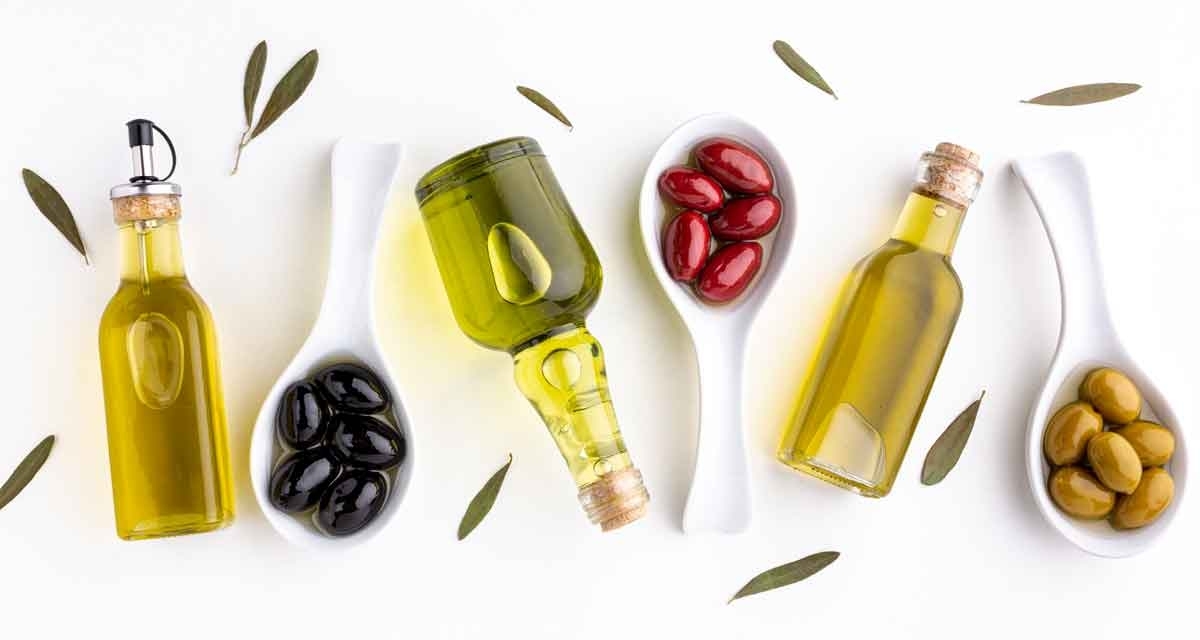
Method of classification
The organoleptic classification is performed by experienced tasters in the same manner as sommeliers. In a glass, which is amber on purpose and has a base wider that its mouth, no more than 30 ml of olive oil are required to conduct the degustation. 28º C is the right temperature to activate the volatility of the oils aromatic components. Between the tasting of each olive oil, the taste must be eliminated with pieces of apple. The classification follows the following steps:OLFACTIVE ANALYSIS
GUSTATIVE ANALYSIS
TACTILE ANALYSIS
VISUAL ANALYSIS
OLFACTIVE ANALYSIS The aroma of olive oil is formed of a complex mixture of volatile compounds that include aldehydes, alcohols, ketones, hydrocarbons# and esters. Therefore, in this first step, the aromas exhaled by the oil are taken into consideration. They are measured according to intensity, and classified by their positive aspects on the one hand, and the unpleasant ones on the other. The positive sensations may be, for example, the fruity aromas of the green olive, apple, green herb#, fig or green leaf#. The unpleasant ones may be those of the vegetal water, moisture, vegetal fibers, metal, vinegar, wine, rancidity, rot or mold.
GUSTATIVE ANALYSIS In the mouth, olive oil must ensure sensations that will be assessed according to intensity, flavor and quality. The good flavors are fruity, pure, fresh, bitter (correct level of this and pleasant), sweet, almondy, vegetal. The flavors considered defective are intensely bitter, intensely spicy, vinegary, acidic, rancid, moldy, rotten, damp, metallic woody; remind one of vegetal fibers, dried leaves, firewood, rope; or seem reheated.
TACTILE ANALYSIS In contact between the tongue and the roof of the mouth, olive oil must present a consistency to be assessed by sensations that may be defined as: pasty, suave, fluid or watery. The latter characteristic may be considered atypical and unpleasant.
VISUAL ANALYSIS The visual aspect is important in classification. Positive aspects cover total resulting from perfect filtration, and the oil is, and absence of water residue because of effective decantation. On the other hand, a negative aspect would be a turbid, dirty or obscure appearance.
COLOR The greener the olive, the greener the oil; riper olives, more golden oil; each type of olive, another color. However, color is not a determining element for classification. Furthermore, many bottles for olive oil are green, not to camouflage the color of the oil, but to protect it from ultraviolet light.
These items are basic in the classification procedure. It should be remembered that the task of the classifier and the laboratory is to determine which olive oil is extra virgin, virgin or lampante, though some mills or factories, more concerned with the quality of their product, seek a balance, a greater harmony among the fruity, the bitter and the spicy. This means that it is not enough to have high scores in each of the criteria above, but to have a more harmonious and balanced relation between aroma and flavor, always seeking to be as close as possible to the attributes of each olive. In other words, if the olive oil comes from a Koroneike olive, the oils aroma and flavor should be close to those of the fruit, and as harmonious and balanced as possible. In case an aroma is too prominent or the flavor is excessive, such an oil may be considered bad or defective.
At this point, we present the final definition of each olive oil:
Extra virgin olive oil is that which presents aroma, flavor, texture and an appearance of quality, such that, on a scale 1 to 10, it obtains scores above 6.5 for aroma, flavor, texture and limpidity.
Virgin olive oil scores 5.5 to 6.5 for aroma, flavor, texture and limpidity.
Besides sensorial analysis, the sample of olive oil in question proceeds to a laboratory where the percentage of acidity and bitterness content can be determined. In general, oil that receives high scores for its qualities, is totally constituted of the substances that confer flavor and aroma, and, consequently, presents low percentages of acidity. However, only laboratory analysis can specify the acidity.
Lampante virgin olive oil scores below 5.5, and does not present aroma or flavor or low acidity, or all these factors together. Thus, it does not offer the attributes necessary for consumption, and is sent for refining, as can be observed in the scheme for production by pressure.
